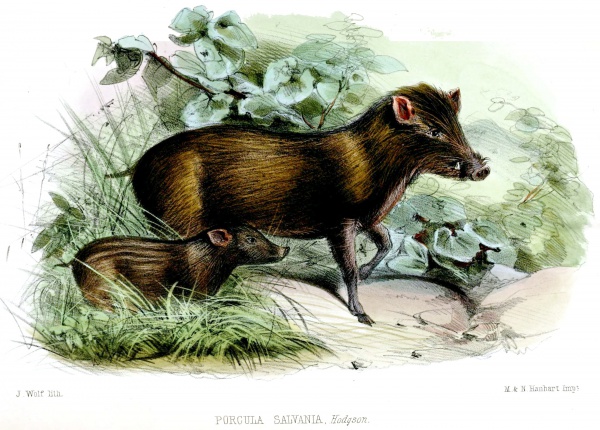Facts About Pygmy hog
The pygmy hog is a small, pig-like animal that inhabits the alluvial grasslands of the Himalayan foothills. Unfortunately, with fewer than 250 mature individuals remaining, it is listed as Endangered on the IUCN Red List. These diminutive creatures typically weigh between 6.6 and 11.8 kg and have dark brownish-black skin covered with dark hair. Their diet consists of roots, tubers, insects, rodents, and small reptiles.
Originally, pygmy hogs were classified under the genus Porcula, but genetic studies led to their reclassification under the genus Sus, specifically as Sus salvanius. However, some scientists argue that their distinct genetic traits warrant a return to their original classification as Porcula salvania.
The pygmy hog's natural habitat has been severely impacted by human activities such as development, agriculture, and grazing by domestic animals, leading to their near extinction.
Conservation efforts face numerous challenges, including a lack of public support and political instability in the region. To address these challenges, the Pygmy Hog Conservation Programme (PHCP) was established in 1995. This program focuses on field studies, captive breeding at the Pygmy Hog Research and Breeding Centre in Assam, habitat management, and raising community awareness. One of their main goals is to reintroduce these hogs into the wild to increase their population.
The PHCP has achieved success with its captive breeding efforts, in stark contrast to the failed attempts in 19th-century zoo exhibitions. Thanks to their diligent work, there is hope for the future of these unique and endangered creatures.

 China
China